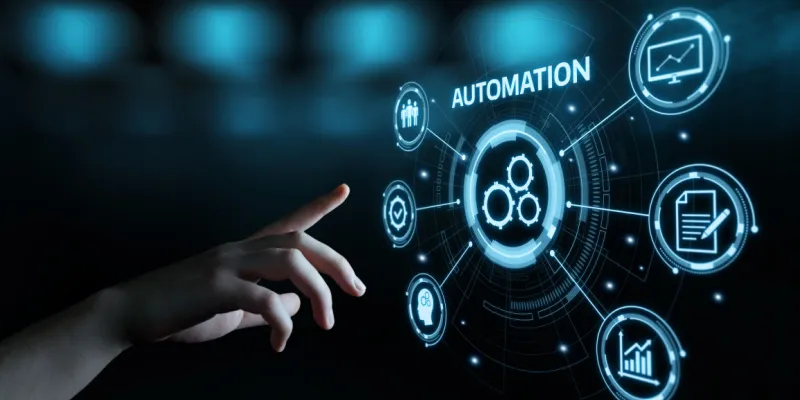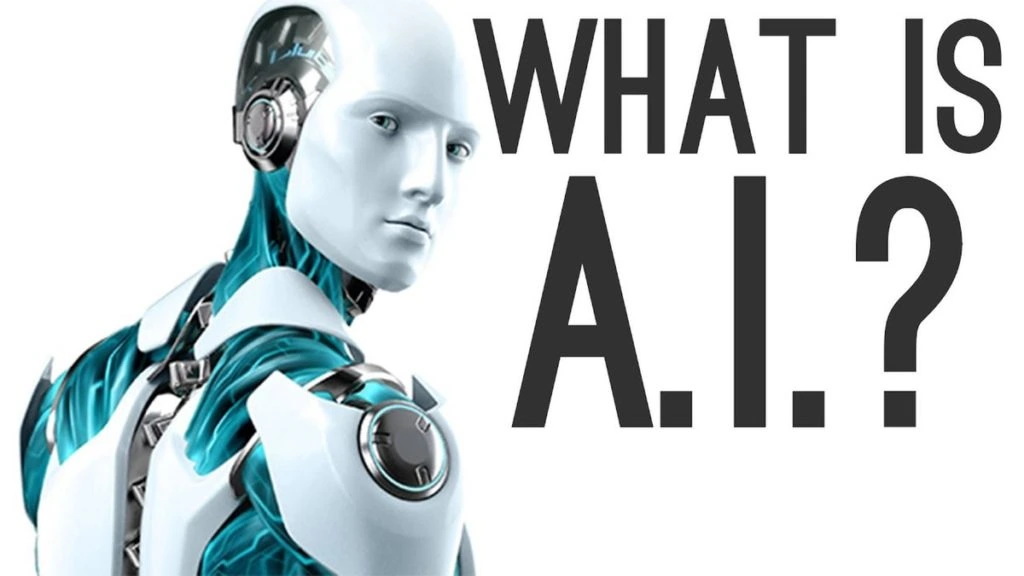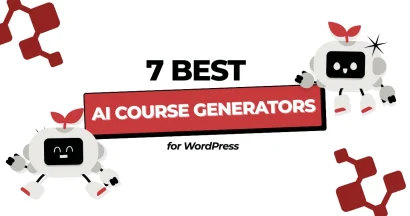Have you ever wondered what the real difference is between automation vs AI?
Automation vs AI are often used interchangeably, but they refer to two very different concepts. Automation is the use of technology to perform tasks that are repetitive and predictable. At the same time, AI is the use of technology to perform tasks that require intelligence, such as learning, reasoning, and problem-solving.
In this blog, we’ll explore the ins and outs of both automation and AI. We’ll look at how they’re used, the benefits they bring, and the challenges we need to watch out for.
So, let’s dive in and get a clearer picture of these two powerful technologies!
Let’s explore!
Eduma – Education WordPress Theme
We provide an amazing WordPress theme with fast and responsive designs. Let’s find out!
What is Automation?

Automation, at its essence, is about setting up systems or processes to operate autonomously, following a predefined set of rules or instructions. In the realm of workflow automation, it’s like saying, “When X happens, do Y.” This could mean automatically adding a contact to your email list when someone fills out a form on your website, or having a scheduling app like Calendly send meeting reminders, removing the need for manual intervention.
Uses of Automation:
Automation shines in scenarios involving repetitive, time-consuming, or mundane tasks. Here are some common applications:
- Workflow Automation: Automating routine tasks within and across applications, such as data entry, file transfers, or report generation.
- Industrial Automation: Employing robots and machines to perform tasks in manufacturing, assembly lines, and other industrial settings.
- Home Automation: Using smart devices to control lighting, temperature, security systems, and other aspects of your home automatically.
- Marketing Automation: Email automation campaigns, social media posting, and other marketing tasks to streamline outreach and engagement.
Benefits of Automation:
Embracing automation can yield a variety of advantages for individuals and businesses alike:
- Increased Productivity: By taking over repetitive tasks, automation frees up valuable time for humans to focus on more strategic, creative, and high-value work.
- Improved Efficiency: Automated processes are typically faster and more streamlined, leading to improved operational efficiency and reduced turnaround times.
- Enhanced Accuracy: Automation minimizes the risk of human error, particularly in tasks involving data entry or calculations.
- Cost Savings: Automating processes can reduce labor costs and operational expenses, improving the bottom line.
- Consistency: Automated systems perform tasks consistently and reliably, ensuring uniformity and quality in output.
- 24/7 Operation: Automated processes can run continuously, even outside of typical business hours, maximizing productivity and service availability.
Potential Challenges of Automation:
While automation presents many benefits, it’s important to consider potential drawbacks:
- Job Displacement: As automation takes over certain tasks, there’s a concern about job losses in some sectors, particularly those involving routine and manual work.
- High Initial Costs: Implementing automation systems can involve significant upfront investment in technology and infrastructure.
- Technical Complexity: Setting up and maintaining automation systems may require specialized skills and expertise.
- Lack of Flexibility: Automated systems are best suited for well-defined and repetitive tasks; they may struggle with adapting to unexpected situations or changes in workflow.
- Over-reliance: Excessive reliance on automation can lead to vulnerabilities if systems malfunction or encounter unforeseen circumstances.
What is Artificial Intelligence?

Artificial intelligence (AI) empowers machines to emulate human cognitive abilities such as learning, reasoning, decision-making, and even, to some extent, “thinking.” It’s not just about automation – performing repetitive tasks tirelessly. AI goes beyond, dynamically adapting to new information and situations, making it capable of handling complex and novel scenarios without explicit human guidance.
At its core, AI is fueled by machine learning – a process where systems are trained on vast amounts of data, allowing them to identify patterns, learn from them, and make informed decisions or predictions. This is what powers many everyday applications, from product recommendations on your favorite online store to the spam filter in your email.
Uses of AI:
AI has seamlessly woven itself into the fabric of our daily lives. Some common applications include:
- Personalized recommendations: Netflix, Amazon, and others leverage AI to suggest content tailored to your individual preferences.
- Spam filters: AI algorithms help keep your inbox clean by identifying and filtering out unwanted emails.
- Fraud detection: AI is deployed by financial institutions to monitor transactions, flagging any suspicious activity for potential fraud.
- Chatbots: AI-powered chatbots like ChatGPT can summarize information, brainstorm ideas, and even assist with writing tasks.
- AI Text and Image Generation: Tools like Jasper and DALL·E 3 are revolutionizing content creation, generating everything from marketing copy to stunning visuals.
Benefits of AI:
The advantages of incorporating AI into various domains are vast and compelling:
- Enhanced productivity: AI takes on routine and time-consuming tasks, freeing up human workers to focus on more strategic and creative endeavors.
- Increased efficiency: AI systems can process information and complete tasks much faster than humans, leading to faster turnaround times and improved operational efficiency.
- Reduced costs: Automating tasks with AI can lead to significant cost savings, particularly in areas like customer service and data analysis.
- Improved decision-making: AI’s ability to analyze large datasets and identify patterns can aid in making more informed and data-driven decisions.
- Enhanced creativity: By taking over mundane tasks, AI allows human creativity to flourish and focus on innovation and problem-solving.
- 24/7 Availability: AI-powered systems can operate around the clock, providing services and support at any time.
Potential Challenges of AI:
While the potential benefits are numerous, it’s crucial to be aware of the challenges associated with AI:
- Job displacement: As AI automates certain tasks, concerns exist about potential job losses in certain sectors.
- Bias and Fairness: AI algorithms are trained on data, and if that data is biased, the AI’s output can also be biased, perpetuating societal inequalities.
- Lack of Transparency: Some complex AI models can be like “black boxes,” making it challenging to understand how they arrived at specific decisions.
- Dependence on Data: The quality of AI’s output is heavily reliant on the quality and accuracy of the data it’s trained on.
Automation vs AI: Key Differences
While both automation vs artificial intelligence (AI) aim to streamline tasks traditionally performed by humans, they operate on fundamentally distinct principles. Here’s a breakdown of their key differences:
While both automation and artificial intelligence (AI) aims to streamline tasks traditionally performed by humans, they operate on fundamentally distinct principles. Here’s a breakdown of their key differences:
Automation vs AI: Core Purpose
- Automation: Focuses on executing repetitive tasks with precision and consistency, often replacing manual labor in predictable processes.
- AI: Strives to mimic human cognitive functions, learning from data and adapting to new information to tackle complex problems.
Automation vs AI: Complexity and Adaptability
- Automation: Operates on predefined rules and sequences, excelling at standardized tasks but struggling with unforeseen variations.
- AI: Employs intricate algorithms and computational models like neural networks to process information, learn from experience, and make informed decisions, enabling it to handle diverse tasks and adapt to evolving scenarios.
Automation vs AI: Scope of Application
- Automation: Best suited for well-defined, repetitive tasks requiring minimal decision-making, such as data entry, manufacturing processes, and basic customer service inquiries.
- AI: Finds applications in complex domains demanding problem-solving, pattern recognition, and adaptation, including natural language processing, image analysis, fraud detection, and autonomous vehicles.
Automation vs AI: Learning Capabilities
- Automation: Follows rigid instructions, lacking the capacity to learn or improve beyond its initial programming.
- AI: Leverages machine learning algorithms to analyze data, identify patterns, and enhance its performance over time, effectively becoming more intelligent and adept at its assigned tasks.
Automation vs AI: Technological Foundations
- Automation: Can range from simple mechanical systems to sophisticated software programs, often involving robotics and process automation tools.
- AI: Relies on cutting-edge technologies like neural networks, deep learning, and natural language processing, harnessing the power of vast datasets and computational resources.
Automation vs AI: Goal Orientation
- Automation: Prioritizes efficiency, accuracy, and reliability in task execution, minimizing human intervention and errors in routine processes.
- AI: Aims to replicate human-like intelligence, exhibiting adaptability, problem-solving skills, and the ability to handle nuanced situations.
Automation vs AI: Side-by-Side Comparison
| Feature | Artificial Intelligence (AI) | Automation |
| Purpose | Mimic human cognitive functions and learn from data. | Perform repetitive tasks efficiently without variation. |
| Complexity | High; involves learning and decision-making capabilities. | Lower; operates based on predefined rules and sequences. |
| Adaptability | Highly adaptable; can improve and adjust over time. | Static; does not adapt unless reprogrammed. |
| Scope of Tasks | Broad; can handle a variety of tasks and scenarios. | Narrow; designed for specific, repetitive tasks. |
| Learning | Capable of learning and evolving from data. | Does not learn; performs tasks as programmed. |
| Technological Base | Based on advanced algorithms, neural networks, etc. | Can range from simple mechanical systems to complex software. |
| Applications | Diverse, including data analysis, natural language processing, etc. | Common in manufacturing, data entry, repetitive office tasks, etc. |
| Goal Orientation | Perform tasks in an intelligent, context-aware manner. | Execute tasks exactly and reliably without deviation. |
In summary: Automation vs AI
While automation focuses on streamlining repetitive tasks through rule-based execution, AI strives to replicate human-like intelligence, learning from data and adapting to tackle complex problems with greater flexibility and decision-making capabilities. Both technologies are crucial in transforming various industries, but their strengths and applications differ significantly.
Read more: 8+ Best Free AI Website Builders
Contact US | ThimPress:
Website: https://thimpress.com/
Fanpage: https://www.facebook.com/ThimPress
YouTube: https://www.youtube.com/c/ThimPressDesign
Twitter (X): https://twitter.com/thimpress


